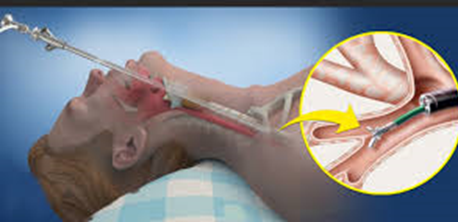A nurse is reinforcing teaching with a client who has a grade 2 ankle sprain. Which of the following statements by the client indicates an understanding of the teaching?
"I will apply heat to my affected ankle to decrease swelling."
"I can bear full weight on my affected ankle."
"I can dangle my affected ankle from the edge of the bed."
"I will wrap my affected ankle with an elastic bandage."
The Correct Answer is D
Choice A Reason:
"I will apply heat to my affected ankle to decrease swelling." Heat application is generally not recommended for acute injuries like ankle sprains. Heat can increase blood flow and potentially worsen swelling. Cold therapy (like ice) is typically advised in the early stages to reduce inflammation and swelling.
Choice B Reason:
"I can bear full weight on my affected ankle." For a grade 2 ankle sprain, bearing full weight on the affected ankle might not be advisable initially. Grade 2 sprains involve partial tearing of ligaments and usually require some period of rest or limited weight-bearing to allow healing.
Choice C Reason:
"I can dangle my affected ankle from the edge of the bed. “Dangling the affected ankle from the edge of the bed is a common recommendation to help with gentle movement and improve blood flow without putting excessive stress on the injured ankle. This activity can aid in the recovery process and is often recommended.
Choice D Reason:
"I will wrap my affected ankle with an elastic bandage. “Wrapping the affected ankle with an elastic bandage is a supportive measure recommended for managing ankle sprains. It helps provide compression, support, and stabilization to the injured area, assisting in reducing swelling and providing comfort.
Nursing Test Bank
Naxlex Comprehensive Predictor Exams
Related Questions
Correct Answer is A
Explanation
Choice A Reason:
Elevate the head of the client's bed for 1 hr. after the feeding is appropriate. This action helps minimize the risk of aspiration. Elevating the head of the bed (typically at least 30 to 45 degrees) can reduce the chance of reflux and aspiration of the feeding solution into the lungs. This position should ideally be maintained for about 1 hour after the feeding to aid digestion and reduce the risk of complications.
Choice B Reason:
Administering the feeding solution at a cold temperature is inappropriate. Feeding solutions are generally administered at room temperature or slightly warmed to prevent discomfort and minimize the risk of altering the client's core body temperature. Cold temperatures can cause discomfort or cramping and might affect the absorption of the nutrients. Therefore, administering the feeding solution at a cold temperature is not recommended.
Choice C Reason:
Rotating the jejunostomy tube once per day is inappropriate. Rotating the jejunostomy tube is not typically part of routine care. Tube rotation can cause discomfort, irritation, and potential injury to the gastrointestinal tract. Tubes should be secured properly to prevent movement but not rotated unless specifically instructed by a healthcare provider for a particular reason, such as checking for proper tube placement.
Choice D Reason:
Flushing the tube with 90 ml of sterile water before and after the feeding is inappropriate.
Flushing the tube with sterile water before and after the feeding helps ensure the patency of the tube and prevents clogging. It's a standard procedure to clear the tube and maintain its function
Correct Answer is D
Explanation
Choice A Reason:
"I can have clear liquids up to 3 hours before the procedure." This is incorrect. Clients are usually instructed to be NPO (nothing by mouth) for a certain period before the procedure, typically 6-8 hours, to reduce the risk of aspiration.
Choice B Reason:
"I can eat as soon as the procedure is completed." This is incorrect. Clients should not eat or drink until the gag reflex returns, which can take a few hours after the procedure.
Choice C Reason:
"I will receive an injection of radioactive material prior to having the procedure.” This is incorrect. An injection of radioactive material is not part of a bronchoscopy. This might be confused with a different diagnostic procedure, such as a PET scan.
Choice D Reason:
"I might have blood-tinged sputum after the procedure." This statement indicates an understanding of the teaching. It is common for clients to have a small amount of blood-tinged sputum following a bronchoscopy due to the irritation caused by the procedure.

Whether you are a student looking to ace your exams or a practicing nurse seeking to enhance your expertise , our nursing education contents will empower you with the confidence and competence to make a difference in the lives of patients and become a respected leader in the healthcare field.
Visit Naxlex, invest in your future and unlock endless possibilities with our unparalleled nursing education contents today
Report Wrong Answer on the Current Question
Do you disagree with the answer? If yes, what is your expected answer? Explain.
Kindly be descriptive with the issue you are facing.
